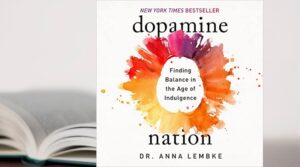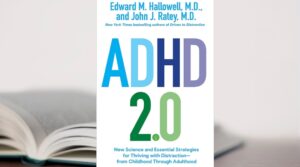Social Media shopping capitalises on dopamine
An anecdotal account in an article in the Guardian showcases some actions a lot of us take when scrolling through social media – stopping at an advert and buying whatever it is that is on offer, being disappointed with the purchase when it arrives and heading off to the post-office to send it back.
The article suggests that the purchasing of these items stems from an underlying desire to fulfil our unmet needs – i.e. ‘what I’m really responding to is the problem solving that [the Instagram advert] presented to me’. Additionally social media shopping is a lot more seamless (or frictionless) than in-store shopping transactions, sometimes taking you close to the point of a 1-click ordering process.
I, however, would argue that social media shopping is rather the fulfilment of a need you never knew you had, well that is until you viewed the highly polished, storytelling, lifestyle changing, self-image enhancing advert.
In a previous life, I worked in a Coca-Cola bottler marketing team in Africa. During that time, the marketing team was always referred to as the ‘Demand Creators’, and the Sales Team as the Demand Fulfillers of the products that were manufactured. This is probably the most accurate description I’ve come across in defining what marketers and advertisers actually do… they create demand for a product or service you didn’t think (or know) you needed. If you hadn’t seen the advert, would you have thought, ‘yes, I definitely need this very specific item’. Possibly not. You would more than likely have made do with what was already available to you. A glass of water is a much healthier, easier, cheaper, better way of quenching your thirst.
Why do we keep compulsively shopping online when we are constantly disappointed with the products we buy?
We know that the anticipation of a reward is often more exciting than the fulfilment of the actual reward. How often have you been really excited about a n upcoming holiday, dinner or event, only to be really disappointed at how little it meets with our expectations.
Neuroscience has shown that the dopamine the brain releases in anticipation of the upcoming reward is a major part of the overall enjoyment of the experience – sometimes to the point that the fulfilment of the action (i.e. the reward) is below par, as we’ve already received the necessary dopamine hit and don’t get the same level of spike when the reward is received.
We know that scrolling through social media already provides our brain with constant mini-injections of dopamine. It’s why we gravitate towards those apps when we are feeling a little down or bored. Being able to up that level of dopamine through the anticipation of a shopping reward, just capitalises on the constant stream of dopamine already being shunted into the brain – and helps to escalate the fix we are craving. It’s a different type of dopamine fix than the rewards that in-store shopping brings.
Sometimes the need for that dopamine inspired reward seeking behaviour leads us down an addictive bent. Dr Gabor Mate often refers to those types of addictions as a form reward or coping mechanism that you’ve lost control over. Dr Gina Cleo, in the first chapter of her new book ‘The Habit Revolution’, refers to habits as often being formed due to decisive actions taken to fulfil a specific function, which has then turned into a subconscious, automated behaviour.
The dopamine rush, therefore, is the primary anticipation driver of the perceived reward that is the underlying element of addictive or behaviour such as compulsive or impulsive shopping – whether that’s instore or online. That behaviour continues because the dopamine rush from the anticipation is well worth the effort, even when the actual item is of poor quality or doesn’t fulfil expectations. So, we continue to engage in the same behaviour, because we crave the dopamine rush that we get from the shopping experience, the anticipation of the items arrival and the opening up of the parcel when it does arrive.
The thing with Dopamine, is that it’s a great ‘pick me up’. Our body is always trying to maintain a homeostatic balance, so, if we are feeling a little down, a little stressed, a little out-of-sorts, we will automatically find a way to get a dopamine boost – to try balance things out again. If scrolling through social media or purchasing something on Instagram is a quick-fix way of doing that, we are going to be drawn towards doing it – again and again.
What can we do to change our behaviour?
The question is, if we are in a habitual loop of buying things on social media that don’t meet the promised expectations, then what can we do to stop this impulsive or compulsive buying loop?
- The first thing is to recognise the habit it for what it is and try to understand what is driving that habit. Think about how you are feeling when you click on the link for the advert. Are you feeling sad, stress, a little low, bored?
- The second thing is to understand what has made you feel that way. What is the trigger. Is there anything you could do to reduce the cause of that feeling? If not, is there anything else you can do to make yourself feel a little better that does not result in scrolling through social media and reduce the chances of clicking on a social media ad – buying something you didn’t think you needed?
- The third thing is to start shifting your automatic behaviour (i.e. habits) in a different direction in the future. So, for example, when you start recognising that you are starting to feel a little bored, try delaying picking up your phone (so you can scroll through social media) and try doing something else that may help reduce the boredom. The main aim is to give your body and mind something else to associate with a quick dopamine release that doesn’t require picking your phone up.
Maybe the solution lies with spending less time without our devices anywhere near us, so we can relearn what it means to give ourselves the opportunity to ‘just be’, to ‘just watch’, or ‘just listen’, or maybe even watch a significant or meaningful event without looking at it through a screen? Maybe we should create more digital free zones at home and while out with friends?
We often spend a lot more time that we would like to on our digital devices. Creating healthier digital habits takes time and perseverance. It will be tough, but for your longer term digital mental health, it is well worth the effort.
As a side note: the video within the first part of The Guardian article is worth a watch – as part of the Guardians ‘Reclaim Your Brain’ series.






